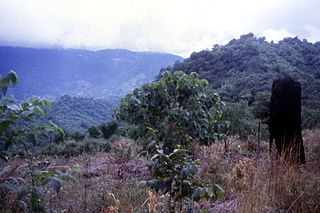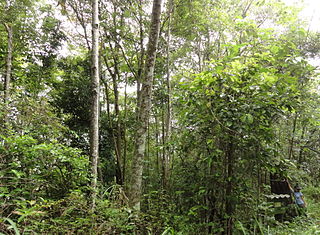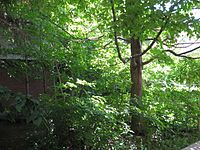
Deforestation or forest clearance is the removal and destruction of a forest or stand of trees from land that is then converted to non-forest use. Deforestation can involve conversion of forest land to farms, ranches, or urban use. About 31% of Earth's land surface is covered by forests at present. This is one-third less than the forest cover before the expansion of agriculture, with half of that loss occurring in the last century. Between 15 million to 18 million hectares of forest, an area the size of Bangladesh, are destroyed every year. On average 2,400 trees are cut down each minute. Estimates vary widely as to the extent of deforestation in the tropics. In 2019, nearly a third of the overall tree cover loss, or 3.8 million hectares, occurred within humid tropical primary forests. These are areas of mature rainforest that are especially important for biodiversity and carbon storage.

A forest is an ecosystem characterized by a dense community of trees. Hundreds of definitions of forest are used throughout the world, incorporating factors such as tree density, tree height, land use, legal standing, and ecological function. The United Nations' Food and Agriculture Organization (FAO) defines a forest as, "Land spanning more than 0.5 hectares with trees higher than 5 meters and a canopy cover of more than 10 percent, or trees able to reach these thresholds in situ. It does not include land that is predominantly under agricultural or urban use." Using this definition, Global Forest Resources Assessment 2020 found that forests covered 4.06 billion hectares, or approximately 31 percent of the world's land area in 2020.

Forestry is the science and craft of creating, managing, planting, using, conserving and repairing forests and woodlands for associated resources for human and environmental benefits. Forestry is practiced in plantations and natural stands. The science of forestry has elements that belong to the biological, physical, social, political and managerial sciences. Forest management plays an essential role in the creation and modification of habitats and affects ecosystem services provisioning.

Reforestation is the practice of restoring previously existing forests and woodlands that have been destroyed or damaged. The prior forest destruction might have happened through deforestation, clearcutting or wildfires. Two important purposes of reforestation programs are for harvesting of wood or for climate change mitigation purposes. Reforestation can also help with ecosystem restoration. One method for reforestation is to establish tree plantations, also called plantation forests. They cover about 131 million ha worldwide, which is 3 percent of the global forest area and 45 percent of the total area of planted forests.

Tropical forests are forested landscapes in tropical regions: i.e. land areas approximately bounded by the tropic of Cancer and Capricorn, but possibly affected by other factors such as prevailing winds.

Forestation is a vital ecological process where forests are established and grown through afforestation and reforestation efforts. Afforestation involves planting trees on previously non-forested lands, while reforestation focuses on replanting trees in areas that were once deforested. This process plays an important role in restoring degraded forests, enhancing ecosystems, promoting carbon sequestration, and biodiversity conservation.

A secondary forest is a forest or woodland area which has regenerated through largely natural processes after human-caused disturbances, such as timber harvest or agriculture clearing, or equivalently disruptive natural phenomena. It is distinguished from an old-growth forest, which has not recently undergone such disruption, and complex early seral forest, as well as third-growth forests that result from harvest in second growth forests. Secondary forest regrowing after timber harvest differs from forest regrowing after natural disturbances such as fire, insect infestation, or windthrow because the dead trees remain to provide nutrients, structure, and water retention after natural disturbances. Secondary forests are notably different from primary forests in their composition and biodiversity; however, they may still be helpful in providing habitat for native species, preserving watersheds, and restoring connectivity between ecosystems.
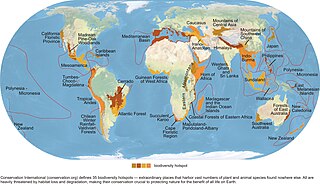
Habitat destruction occurs when a natural habitat is no longer able to support its native species. The organisms once living there have either moved to elsewhere or are dead, leading to a decrease in biodiversity and species numbers. Habitat destruction is in fact the leading cause of biodiversity loss and species extinction worldwide.

Ecological restoration, or ecosystem restoration, is the process of assisting the recovery of an ecosystem that has been degraded, damaged, or destroyed. It is distinct from conservation in that it attempts to retroactively repair already damaged ecosystems rather than take preventative measures. Ecological restoration can reverse biodiversity loss, combat climate change, and support local economies. Habitat restoration involves the deliberate rehabilitation of a specific area to reestablish a functional ecosystem. To achieve successful habitat restoration, it's essential to understand the life cycles and interactions of species, as well as the essential elements such as food, water, nutrients, space, and shelter needed to support species populations. When it's not feasible to restore habitats to their original size or state, designated areas known as wildlife corridors can be established. These corridors connect different habitats and open spaces, facilitating the survival of species within human-dominated landscapes. For instance, marshes serve as critical stopover sites for migratory birds, wildlife overpasses enable animals to safely cross over highways, and protected riparian zones within urban settings provide necessary refuges for flora and fauna. The United Nations named 2021-2030 the Decade on Ecosystem Restoration.
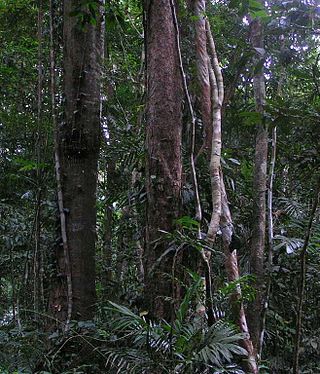
Forest ecology is the scientific study of the interrelated patterns, processes, flora, fauna and ecosystems in forests. The management of forests is known as forestry, silviculture, and forest management. A forest ecosystem is a natural woodland unit consisting of all plants, animals, and micro-organisms in that area functioning together with all of the non-living physical (abiotic) factors of the environment.
Forest management is a branch of forestry concerned with overall administrative, legal, economic, and social aspects, as well as scientific and technical aspects, such as silviculture, protection, and forest regulation. This includes management for timber, aesthetics, recreation, urban values, water, wildlife, inland and nearshore fisheries, wood products, plant genetic resources, and other forest resource values. Management objectives can be for conservation, utilisation, or a mixture of the two. Techniques include timber extraction, planting and replanting of different species, building and maintenance of roads and pathways through forests, and preventing fire.
The Heart of England Forest is a charitable entity based in England, dedicated to the conservation and ecological restoration of native woodlands primarily within the counties of Warwickshire and Worcestershire. This initiative aims to address the loss of ancient woodlands and habitats, a significant environmental concern in the region historically covered by the vast Forest of Arden, which has been substantially diminished due to extensive deforestation activities over the centuries.
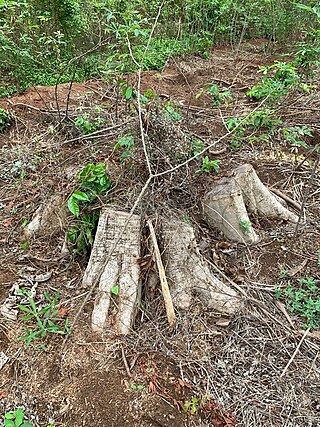
Deforestation in Nigeria refers to the extensive and rapid clearing of forests within the borders of Nigeria. This environmental issue has significant impacts on both local and global scales.

Assisted natural regeneration (ANR) is the human protection and preservation of natural tree seedlings in forested areas. Seedlings are, in particular, protected from undergrowth and extremely flammable plants such as Imperata grass. Though there is no formal definition or methodology, the overall goal of ANR is to create and improve forest productivity. It typically involves the reduction or removal of barriers to natural regeneration such as soil degradation, competition with weeds, grasses or other vegetation, and protection against disturbances, which can all interfere with growth. In addition to protection efforts, new trees are planted when needed or wanted. With ANR, forests grow faster than they would naturally, resulting in a significant contribution to carbon sequestration efforts. It also serves as a cheaper alternative to reforestation due to decreased nursery needs.
Land restoration, which may include renaturalisation or rewilding, is the process of restoring land to a different or previous state with an intended purpose. That purpose can be a variety of things such as what follows: being safe for humans, plants, and animals; stabilizing ecological communities; cleaning up pollution; creating novel ecosystems; or restoring the land to a historical condition, for example how indigenous people managed the land. Ecological destruction or degradation, to which land restoration serves as an antidote, is usually the consequence of human influence's intended or unintended consequences. This can include pollution, deforestation, salination, or species endangerment, among many more. Land restoration is not the same as land reclamation, where existing ecosystems are altered or destroyed to give way for cultivation or construction. Land restoration can enhance the supply of valuable ecosystem services that benefit people.

The International Day of Forests was established on the 21st day of March, by resolution of the United Nations General Assembly on November 28, 2013. Each year, various events celebrate and raise awareness of the importance of all types of forests, and trees outside forests, for the benefit of current and future generations. Countries are encouraged to undertake efforts to organize local, national, and international activities involving forests and trees, such as tree planting campaigns, on International Day of Forests. The Secretariat of the United Nations Forum on Forests, in collaboration with the Food and Agriculture Organization, facilitates the implementation of such events in collaboration with governments, the Collaborative Partnership on Forests, and international, regional and subregional organizations. International Day of Forests was observed for the first time on March 21, 2013.

Mangrove restoration is the regeneration of mangrove forest ecosystems in areas where they have previously existed. Restoration can be defined as "the process of assisting the recovery of an ecosystem that has been degraded, damaged, or destroyed." Mangroves can be found throughout coastal wetlands of tropical and subtropical environments. Mangroves provide essential ecosystem services such as water filtration, aquatic nurseries, medicinal materials, food, and lumber. Additionally, mangroves play a vital role in climate change mitigation through carbon sequestration and protection from coastal erosion, sea level rise, and storm surges. Mangrove habitat is declining due to human activities such as clearing land for industry and climate change. Mangrove restoration is critical as mangrove habitat continues to rapidly decline. Different methods have been used to restore mangrove habitat, such as looking at historical topography, or mass seed dispersal. Fostering the long-term success of mangrove restoration is attainable by involving local communities through stakeholder engagement.

Eden Reforestation Projects (Eden) is a nonprofit NGO that works in developing countries to rebuild natural landscapes destroyed by deforestation. Eden works directly with communities experiencing extreme poverty resulting from the deforestation and destruction of the land that sustains them. The organization employs thousands of local community members and provides them with the education and tools necessary to plant, grow, and protect to maturity, millions of trees each year. Eden currently plants approximately 15 million trees a month, and in 2020 reached over 423 million trees planted of which over 225 million are mangrove trees.

Deforestation is a primary contributor to climate change, and climate change affects the health of forests. Land use change, especially in the form of deforestation, is the second largest source of carbon dioxide emissions from human activities, after the burning of fossil fuels. Greenhouse gases are emitted from deforestation during the burning of forest biomass and decomposition of remaining plant material and soil carbon. Global models and national greenhouse gas inventories give similar results for deforestation emissions. As of 2019, deforestation is responsible for about 11% of global greenhouse gas emissions. Carbon emissions from tropical deforestation are accelerating.
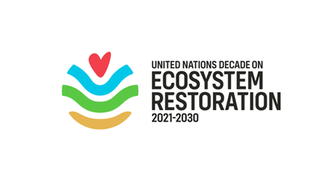
The United Nations Decade on Ecosystem Restoration runs from 2021 to 2030. Similar to other nature related international decades, its purpose is to promote the United Nation's environmental goals. Specifically, to facilitate global cooperation for the restoration of degraded and destroyed ecosystems. Along with fostering efforts to combat climate change, safeguard biodiversity, food security, and water supply. While much focus is on promoting restoration activity by national governments, the UN also wishes to promote such efforts from other actors, ranging from the private sector and NGOs to regular individuals.

